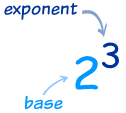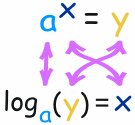Now, i'm going to teach you how to do mean, median, and mode step by step.
First of all, i want to explain first what is mean by Mean, median, and mode.
Mean, median, and mode are three kinds of "averages". There are many "averages" in statistics, but these are, I think, the three most common, and are certainly the three you are most likely to encounter in your pre-statistics courses, if the topic comes up at all.
The "mean" is the "average" you're used to, where you add up all the numbers and then divide by the number of numbers.
The "median" is the "middle" value in the list of numbers. To find the median, your numbers have to be listed in numerical order, so you may have to rewrite your list first.
The "mode" is the value that occurs most often. If no number is repeated, then there is no mode for the list.
Practice Examples
You will need paper, pencil and calculator. |
| 1. |
The weekly salaries of six employees at McDonalds are $140, $220, $90, $180, $140, $200. For these six salaries,
find: (a) the mean (b) the median (c) the mode
Mean: 90+ 140+ 140+ 180 + 200 + 220 =
6
Median: 90,140,140,180,200,220 The two numbers that fall in the middle need to be averaged. 140 + 180 = 160 Mode: The number that appears the most is 140 | |||||||||||||||||||||||||||||||||||
| 2. | Andy has grades of 84, 65, and 76 on three math tests. What grade must he obtain on the next test to have an average of exactly 80 for the four tests?84 + 65 + 76+ x = 80(average) cross multiply 4 and solve (4)(80) = 225 + x 320 = 225 + x -225 -225 95 = x Andy needs a 95 on his next test. | |||||||||||||||||||||||||||||||||||
| ||||||||||||||||||||||||||||||||||||



















